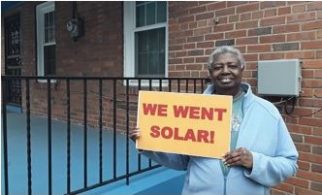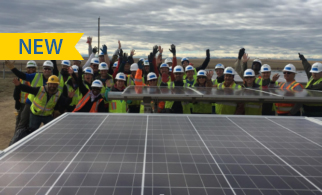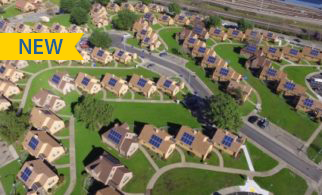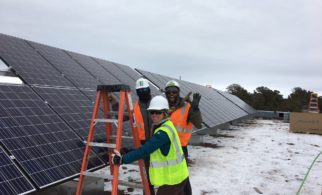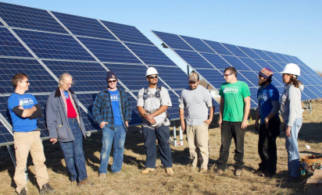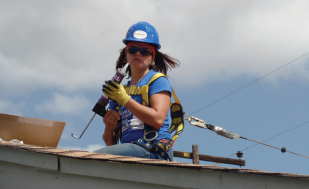Community Shared Solar
Guiding principles: Accessibility and Affordability, Compatibility and Integration, Sustainability and Flexibility
Barriers addressed: Cost, Physical Barriers, and Home Ownership Status, Housing Conditions
Shared solar programs, sometimes known as ‘community solar’ or ‘solar gardens,’ help address the physical and financial barriers of going solar for those who do not own their home or have a suitable roof, or who live in multifamily housing. Shared solar programs allow multiple energy customers to subscribe or otherwise participate in a solar energy project located somewhere else in their community. Participants receive a credit on their utility bill for their portion of the clean energy produced.
This model can help make solar more attainable for low-income customers for a number of reasons. It provides renewable energy access for those who are renters or otherwise cannot host an onsite system. It can make the most of siting potential in an area to maximize production and lower costs. It can facilitate participation in smaller increments that might not be financially viable as a stand-alone installation, which in turn requires a smaller financial commitment. It can also make securing financing for projects with low-income participants easier due to the easy transfer of subscriptions.
Community shared solar programs are being increasingly adopted by states and forward-looking utilities that want to connect more consumers with clean energy. Today at least 15 states and the District of Columbia have some form of shared solar policy in place, although their policy structures and resulting market impact varies widely. These early programs have shown the importance of establishing a bill credit that properly compensates the customer for the long-term value of the clean energy produced. Furthermore, this experience has shown that an explicit policy focus on serving low-income consumers is necessary for successfully expanding program reach to those communities at scale.
State community shared solar policies should achieve the following principles, which are critical for serving the general and low-income markets alike (also check out CCSA’s Community Solar Policy Decision Matrix):
- Shared solar programs should expand access to a broader group of energy consumers than the current solar policies and market allow.
- Participants in a shared solar program should receive tangible economic benefits, such as net metering credits, on their utility bills.
- Shared solar policies should be flexible enough to allow for different ownership and contract models to meet different consumers’ preferences and financial standing, such as an up-front payment model, a leasing agreement or co-op style ownership.
- Shared solar policies should be additive to existing renewable energy programs, not undermine them.
In order to effectively serve low-income consumers, shared solar policies should go farther to address the additional financial and market barriers that these customer face. States should set strong targets for low-income participation and provide adequate support for achieving those targets through programs such as:
- Targeted incentives and credit support to facilitate direct low-income participation and maximize benefits for participants (e.g. subscriptions should be sized and structured to achieve meaningful savings, ideally monthly electricity bill reduction of 50 percent or more);
- Grants and technical assistance for industry and nonprofit partners to facilitate solar project development;
- Policy leadership to guide utilities and developers to identify sites ideal for interconnection, and consideration of preference or targeted support for siting low-income community solar projects (e.g. brownfields, public land, etc.);
- Government procurement or incentives to secure anchor participants to underwrite low-credit participants and mitigate investor risk;
- Funding for pilot projects directed specifically at low-income subscribers;
- Funding for development or acquisition of program management software for LMI community solar projects or programs;
- Tailored program rules to maximize benefits to and encourage participation by affordable housing providers; and
- Collaboration with local communities and organizations on siting to promote visibility and community connection.
States and utilities should exercise caution against adopting shared solar policies that set targets for low-income participation, but that do not provide the additional support and incentives necessary to ensure the achievement of those targets (e.g. meaningful monthly savings for participants). This type of policy that lacks additional incentives is less likely to result in low-income participation and benefit.
